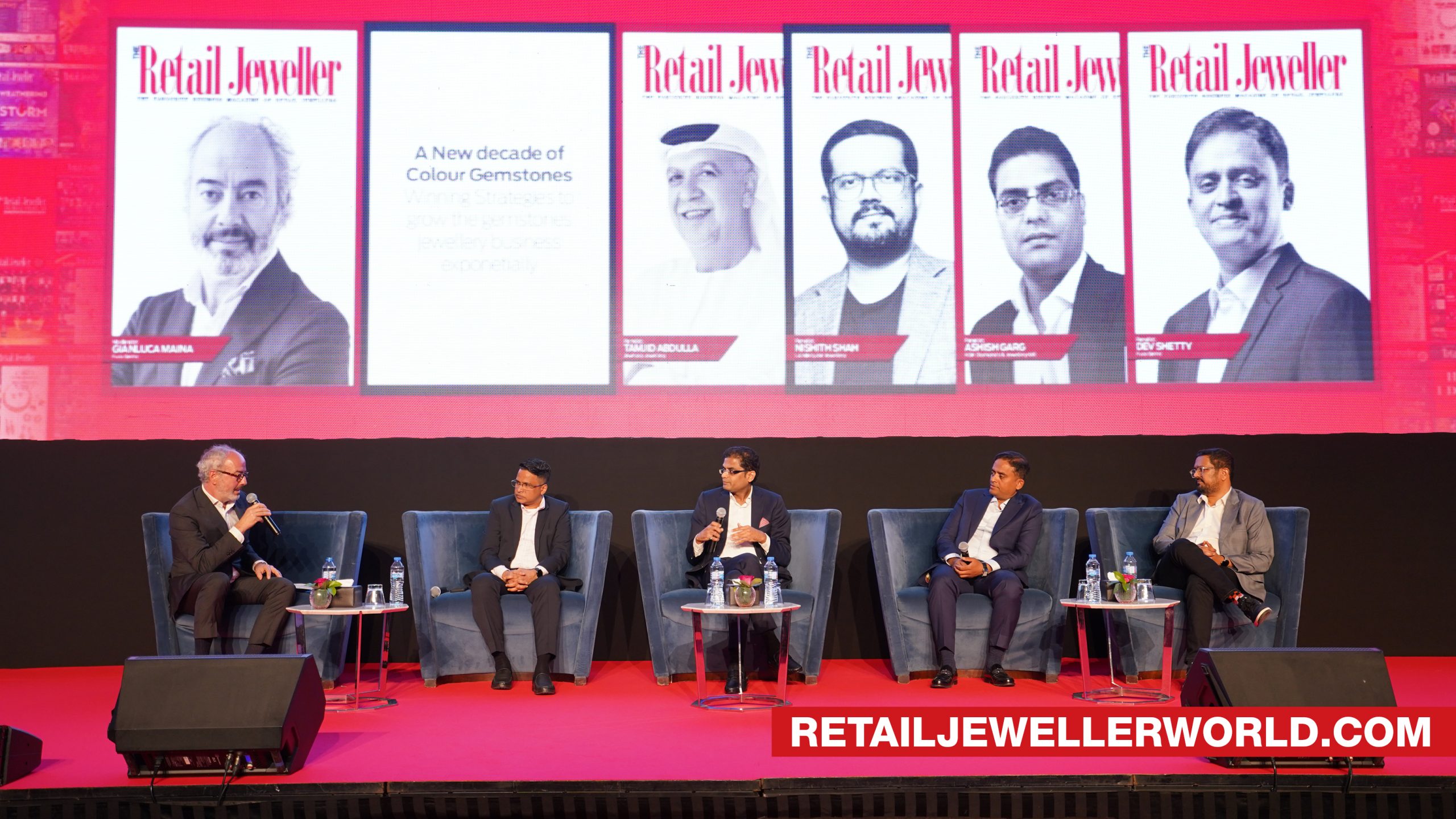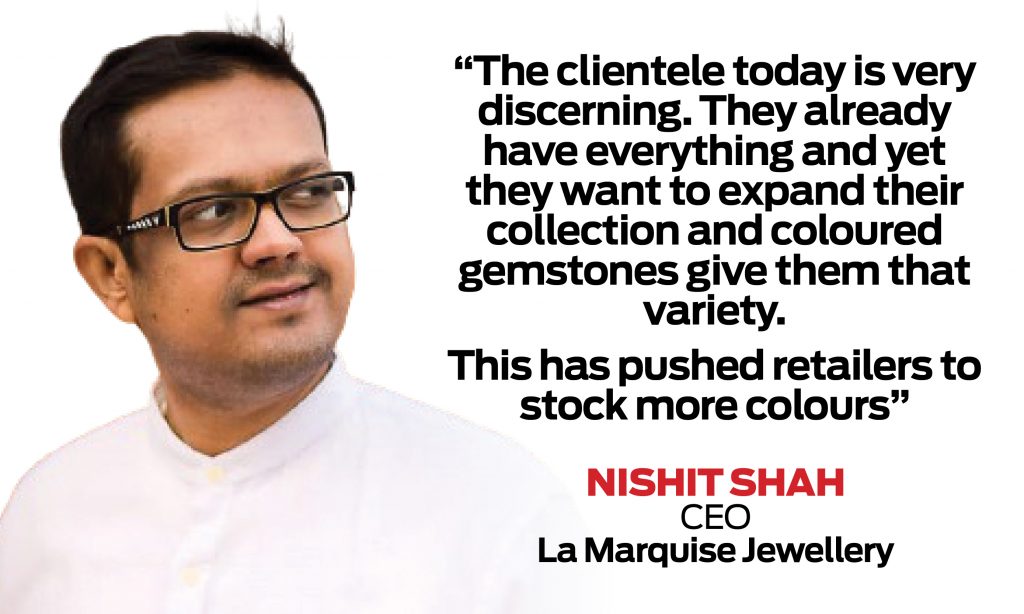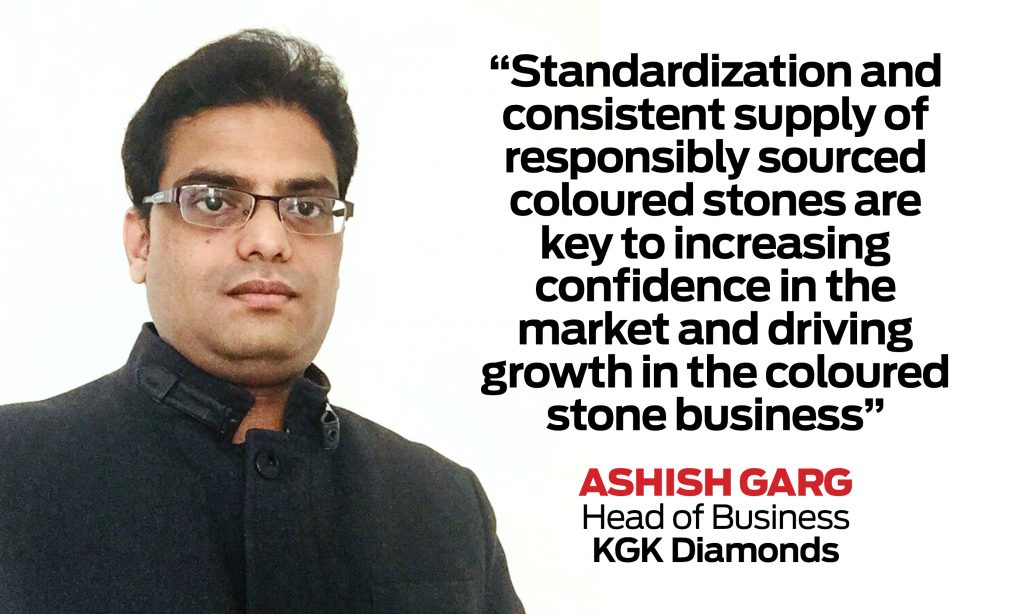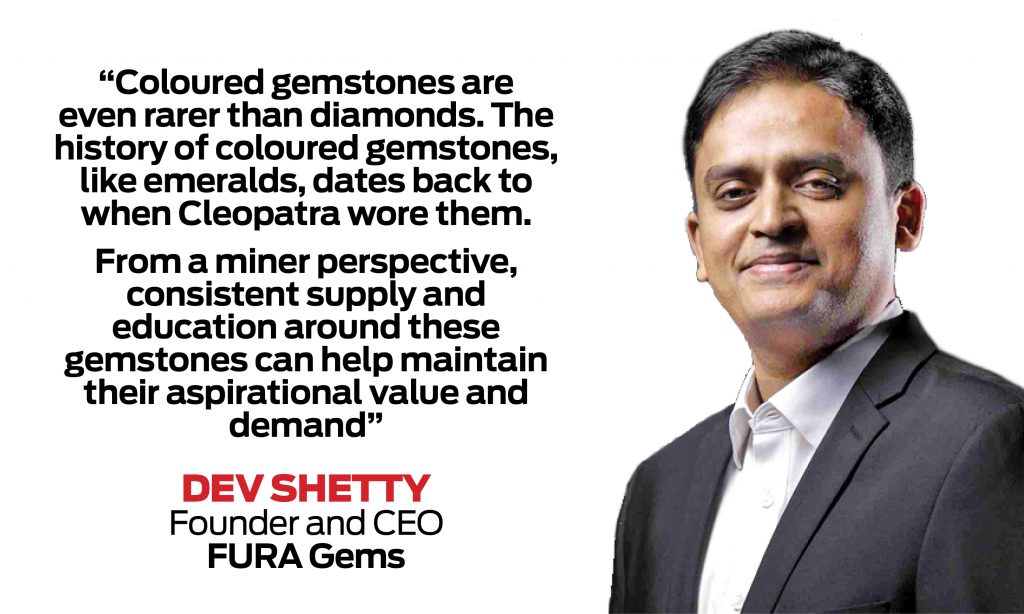RJ Market Watch
Retail Jeweller Dubai Forum 2023 Insights: Industry insiders say coloured gemstones can be future of precious jewellery

Experts discuss trends, marketing strategies, consumer demand, unlocking potential and the future of the market
There’s a saying that a coloured stone possesses a language without words, and it is this language that was the focal point of a panel discussion at The Retail Jeweller Dubai Forum held recently. The panel, consisting of industry stalwarts, delved into the winning strategies that would drive the growth of the coloured gemstone jewellery business.
Moderated by Gianluca Maina, Marketing Director at FURA Gems, the panelists including Anwar Hussain from Jawhara Jewellery, Nishit Shah from La Marquise Jewellery, Ashish Garg from KGK Diamonds and Dev Shetty from FURA Gems shared their insights on various aspects of the business, right from mines to the retail market, opportunities and trends of coloured gemstones as a category.
Anwar Hussain of Jawhara Jewellery began the discussion by emphasizing the enormous potential of coloured stones in the jewellery market. While his company initially focused on classic collections, they have recently introduced fashion jewellery featuring semi-precious coloured stones that has seen exceptional success.
Hussain stressed the importance of educating the sales force about the history and significance of different coloured gemstones so that they can later educate the customer. He mentioned that Jawhara Jewellery has implemented various training programmes for their staff, so they can understand and have the confidence to sell products effectively. Education is key for both customers and sales staff alike, he said.
TO EACH SEGMENT ITS OWN

According to Nishit Shah, Chief Executive Officer, La Marquise Jewellery, coloured gemstones offer a range of qualities and clarities, much like diamonds. Each segment of the market has its own unique trend, with the higher-end segment focusing on classic designs that highlight the stone’s value, as they can be even rarer than diamonds. In the Middle East, the lower segment of customers prefers fashion jewellery, and the key is to conceptualize a collection and market it efficiently.
The ‘big three’ gemstones – ruby, emerald, and sapphire – consistently sell across all markets. However, for other gemstones, it’s all about how they are conceptualized. For instance, La Marquise’s Imperia Collection features a medley of coloured stones, ranging from turquoise to morganites, each piece boasting at least eight to nine different types of gemstones. Collections that mix different stones tend to sell better than those that feature only one type of semi-precious stone. With increasing customer knowledge, coloured gemstones have an incredible opportunity to thrive in the current market, Shah noted.
THE WHOLESALE PERSPECTIVE

Panelist Ashish Garg, Head of Business at KGK Diamonds, who is on the Board of Directors of Dubai Jewellery Group, discussed the demand for coloured gemstones from a wholesale perspective. He explained that coloured stones add dimension and a wider colour palette to jewellery designs, making them increasingly popular among discerning customers who are looking to expand their collections. While his hometown, Jaipur, is a hub for emeralds and coloured stones, Garg noted that the UAE market is still in its early stages compared to India, Europe and the US, where coloured stone jewellery is performing exceptionally well.
Garg attributed the slow market in the UAE to the lack of standardization in grading and pricing. However, KGK Diamonds has developed a grading standard for coloured stones that has been well-received globally, particularly by European brands. According to him, standardization and consistent supply of responsibly sourced coloured stones are key to increasing confidence in the market and driving growth in the coloured stone business.

In response to Garg’s call for standardization in the pricing and grading of coloured gemstones, Dev Shetty, Founder and CEO of FURA Gems, offered a different perspective. Shetty asserted that the unique beauty of coloured gemstones is God’s creation, and therefore, he sees no need for standardization or a price sheet. According to Shetty, these gems are the result of millions of years of natural processes, as well as the skill and craftsmanship of gem cutters and jewellers who take days and days to make beautiful jewellery out of it, and hence he believes that buyers and sellers should determine the value of these gems.
He further went on to share his insights on how mining companies can become leading suppliers of coloured gemstones by focusing on consistent supply, education and creating aspirational demand for these rare and beautiful gems. Much like Shah, he also emphasized the importance of continuing the supply of emeralds, rubies, and sapphires, which have a long and storied history dating back to the time of Cleopatra.
GROWTH POTENTIAL
During the discussion, the panelists also delved into the potential for growth of coloured gemstones and examined the demographics of consumers for such jewellery. Hussain, offering his perspective as a retailer, highlighted the need for introducing brands in the market, as there are currently very few. He emphasized that small items made from coloured gemstones are more suitable for younger consumers, and those targeting new brands are important to increase sales of coloured stones. Shah agreed with Hussain and suggested that there needs to be more conceptualized marketing for each product category. He also noted that while the general consumer tends to first buy gold, followed by diamonds, focusing on the story and education around the history and significance of each colour could help to consistently increase demand for coloured gemstones.
Garg pointed out that there are two types of customers – older consumers with more disposable income, and younger consumers who need jewellery to match their outfits and are more frequent buyers. However, he stressed the importance of sustainability in attracting young customers. He argued that the youth need to know that what they are wearing is ethically sourced and produced, and that small details such as ‘no child labour used’ matter to them.
SUSTAINABILITY IS IMPORTANT
According to Shetty, sustainability is also important from a miner’s perspective, with employee, sustainability, and community being the three important silos of their business. He explained that it is necessary to take the community along, providing job opportunities to people living around the mines while also prioritizing the environment. While the millennials may not pay extra for ethical practices, it does matter to them, and businesses need to incorporate sustainability and ethics in order to improve the category of coloured stones.
The panelists also touched upon ‘edu marketing’ and had a consensus opinion that marketing combined with the right education through YouTube videos, booklets, magazine articles and social media channels can help spearhead coloured stones as the future of precious jewellery.
(This article is part of a series of insights from the recently held 4th edition of Retail Jeweller Dubai Forum. To register your interest for the 5th edition of the Forum to be held in February 2024, write to rjmarketing@retailjewellerindia.com)

















